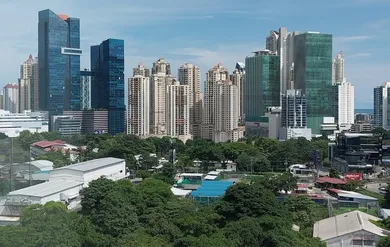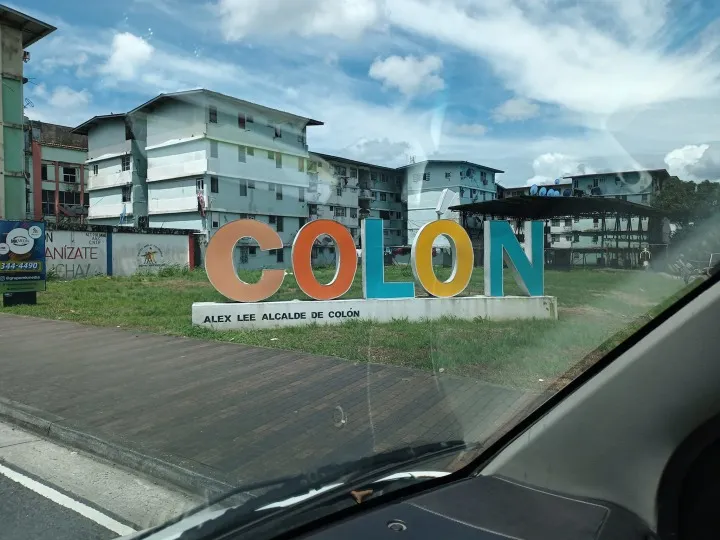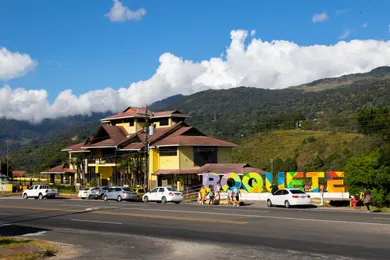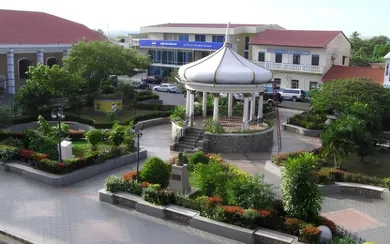
Panama City: Panamas historic and welcoming capital city
Panama City is beautiful, modern and captivating. This is the reason why in 2023 thousands of retirees chose this city as their retirement destination.

Colon is one of the 10 provinces that make up the Republic of Panama. Despite its small size, it enjoys an indisputable importance for the country and the region.
The province stands out for its fascinating Caribbean-style towns, islands with turquoise beaches and a history that deserves to be heard. Its enchanting landscapes and pleasant climate attract many travelers from around the world.
In this post, we present a panoramic image of the province, as well as its most outstanding places. That is to say, we will see the particularities of its history without overlooking its most recent achievements.
We invite you to rediscover the province of Colon with us, read on!
Colon is located in a privileged spot within the Panamanian geography. To the north we find the Caribbean Sea and to the south we find the provinces of Panama and Cocle. To the east and west are the Kuna Yala region and the province of Veraguas, respectively.
Access to both the province and its capital, also known as Colon, is relatively easy. For example, the duration of a trip from Panama City to Colon can take an average of 1 hour or 1 hour and a half, depending on the means of transportation used and its speed.
The climate in Colon is warm most of the year. The remaining months are characterized by rain and humid air. The temperature oscillates between 75.2° F and 86° F, which prevents the seasons from being easily differentiated. The latter is very common in the Caribbean regions.
The history of the province of Colon is exciting. Every detail brings life and color, from the meaning of its name to its foundation.
Its name comes from the iconic figure of the Genoese navigator Christopher Columbus, who was amazed on one of his voyages when he saw these lands for the first time. The colonenses, as those who live in Colón are called, were not always persuaded of that name.
In fact, originally they considered calling the territory: Aspinwall; in honor of the North American businessmen who participated in the founding of the city. However, this idea was eventually discarded, and both the city and province were named Columbus instead.
The founding of the city took place on February 27, 1852. The choice of date was closely related to the construction of the world’s first transcontinental railroad in the city itself.
It may surprise you to learn that despite being over 170 years old, this transportation method still plays a crucial role in moving both people and, especially, goods today.

The history of the province of Colón arouses the curiosity of locals and foreigners alike, and several of its most important places feed this interest.
The San Lorenzo fortress is, without a doubt, one of them. The fort through its rustic construction, as well as the image of the cannons are elements that transport us to another era; one in which pirates and corsairs lurked in the waters of the Caribbean. The Fortaleza San Lorenzo is considered a World Heritage Site for its cultural and historical value.
The construction of fortresses in most of the Caribbean was carried out by slaves, mainly Africans. The province of Colon was characterized for having a numerous presence of them. The influence of these African slaves in the province continues to this day, even in areas such as culinary culture and typical dances.
When touring the province of Colon, we must stop in the coastal town of Portobelo, just as Christopher Columbus would have done in the past.
The locals say that Christopher Columbus was so amazed that he baptized the place with the name of Portobelo, no doubt he thought it was a beautiful port. This is a charming place, overlooking a deep sea and green forests and mangroves. Its picturesque houses and narrow streets are full of culture and history.
The ruins of a Spanish fortress and its rusty cannons remain as witnesses in this port. Due to its historical and cultural value, the fortress of Portobelo was declared a World Heritage Site by UNESCO.
In front of Portobelo Bay, the Congo House is located. A space opens to all types of people who wish to get in touch with the African roots of Panama. In addition, this beautiful house is home to numerous artistic and cultural workshops. Visitors can witness the African legacy in the region, as well as the manifestations of Congo art.
In Portobelo you can also visit the National Park. The purpose of this is to protect the reefs, mangroves, marine forests and tropical forests of the region, as well as the fauna that inhabits there. The public has access to most of its areas as long as they participate in its conservation. Portobelo National Park favors environmental education for visitors.
But this is not the only thing that Colon has to offer.
The geographical location of Colon, just a few steps from the Caribbean Sea, allows you to enjoy several islands. Especially Isla Grande and Isla Mamey, desirable for their turquoise beaches, white sand and the different recreational activities they offer. Among them: rowing, kayaking, snorkeling and boat excursions; in addition to the always timely sunbathing.
These islands are true natural paradises: fine sandy beaches, warm waters, a refreshing breeze and large rows of coconut trees. It is the ideal place to leave the routine behind and take a vacation. These Caribbean islands conquer more than a few national and international tourists every year.
If you decide to visit the province of Colon you can also enjoy the Panama Canal, even if you are not in the capital city. This is because near the city of Colon you will find the Atlantic entrance to the canal.
Can you imagine being able to see this marvelous work of engineering? The Panama Canal has been considered one of the wonders of the modern world. Which makes the city a part of that wonder and that is why Colon has become one of the main tourist destinations in recent years.
The Panama Canal Expansion Observation Center, located in Colon, has photographic exhibits, interesting facts about the Canal expansion, an extensive ecological trail, among other features. This sort of viewpoint allows you to appreciate the Canal from a privileged place. See with your own eyes the progress of technology and human knowledge, as well as treasure some memories of the area.
You will surely have noticed that this Caribbean province is the exact mix of history and modernity. Here you can find a diversity of scenarios that are worth visiting: islands, beaches, a natural park, culture and history intermingled. But the richness of Colon is not only in its important places but also in the familiarity of its people. It is a small Caribbean province that is exciting to discover.

Panama City is beautiful, modern and captivating. This is the reason why in 2023 thousands of retirees chose this city as their retirement destination.

Volcan Panama is a small mountain town in Chiriqui Panama. Because of the altitude the climate in Volcan is cool and pleasant all year round.

Boquete, in the green mountains of Chiriqui is quiet, unspoiled, uncrowded, with tumbling rivers and waterfalls. Plus an it has ideal year-round climate.

Experience the enchanting town of Chitre on Panama's Azuero Peninsula, where colonial charm meets modern conveniences.